How to make a Countertop Template
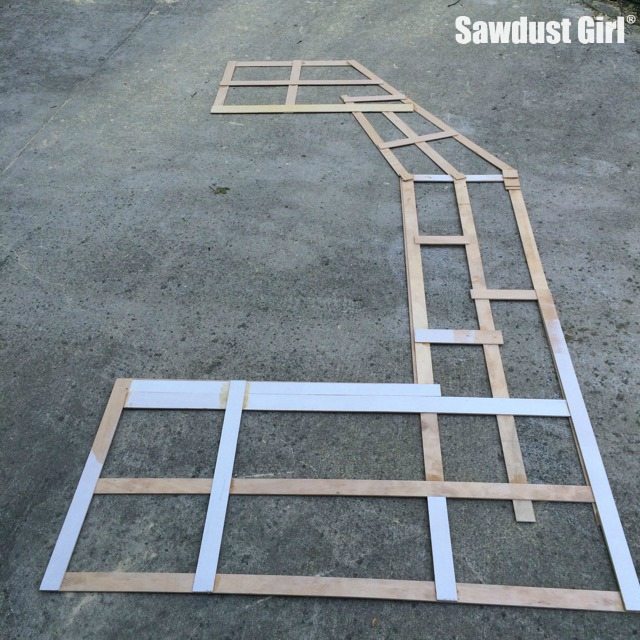 As you know, my pantry has an angled wall which increases the level of difficulty when it comes to fitting it with cabinets and a countertop. Building a countertop with corners is challenging enough but add an odd angle into the mix and it becomes a level RED headache. Or it could, if you let it. 🙂 I decided to build my countertops “offsite” and then install them in the pantry. The easiest way to do that, is to make a countertop template that I could take into the workshop and use as a life size guide replica of the shape I needed to create.
As you know, my pantry has an angled wall which increases the level of difficulty when it comes to fitting it with cabinets and a countertop. Building a countertop with corners is challenging enough but add an odd angle into the mix and it becomes a level RED headache. Or it could, if you let it. 🙂 I decided to build my countertops “offsite” and then install them in the pantry. The easiest way to do that, is to make a countertop template that I could take into the workshop and use as a life size guide replica of the shape I needed to create.
How to make a Countertop Template
I decided I wanted to do a DIY countertop for the pantry for a couple reasons; 1: expense, 2: I didn’t want to wait. HA! All said and done I could have gotten a fabricator in here to template and fabricate a granite countertop in the time it took me to deal with my “workshop upgrade”. BUT, decisions were made that I couldn’t back out of once I took apart my dust collector system! LOL
Before I started building any countertops I had to create a template. Creating a countertop template is really easy, cut a whole bunch of strips of inexpensive thin wood. 3/16″ or 1/4″ masonite or plywood will work. I used some junky thin plywood that had served as a “floor” to a big pallet of something that I had delivered at some point …for something. See how hoarding all the scrap wood pays off!
- Cut 3″ strips of 1/4″ plywood.
- Lay the strips on top of the cabinets, creating a grid.
- Glue the strips together with either wood glue or hot glue.
- Hot glue would have been 100 times faster than waiting for wood glue to dry!
- If you don’t have a hot glue gun, wood glue and lots of heavy items to weigh down your “joints” works great!

Most countertops extend beyond the cabinets. I felt it would be easiest to first create a strong cabinet outline and then add an overhang.
- I created my template first by following the exact layout of the cabinets. Then I came back later and inserted additional strips under the front of my template to create an overhang.
- Because the rest of the template was already set, I didn’t have to worry it moving or adjusting while I glued on my additional strip, measured to make sure it was exactly the same all the way around.
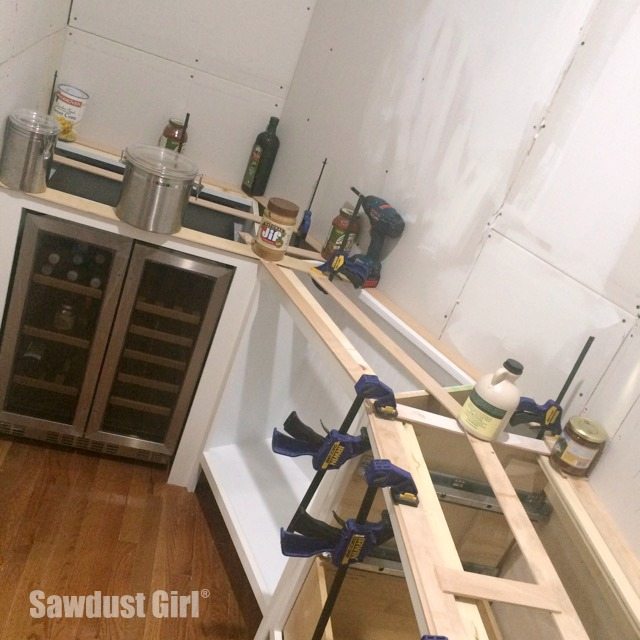
As you can see, you don’t have to have a bunch of fancy clamps or tools. Make use of what’s on hand. Peanut butter, maple syrup, olive oil…
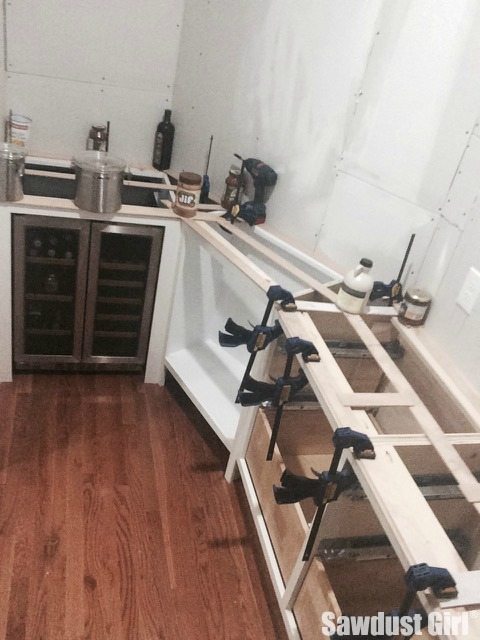
Once the glue is dry you’re all set to take your template out to your workshop and build away! Unless you can’t get your template out of the room you just built it in!

Yeah, that was fun! 😀

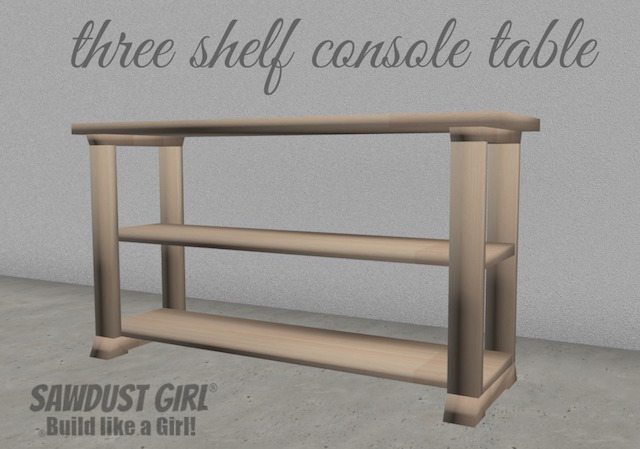
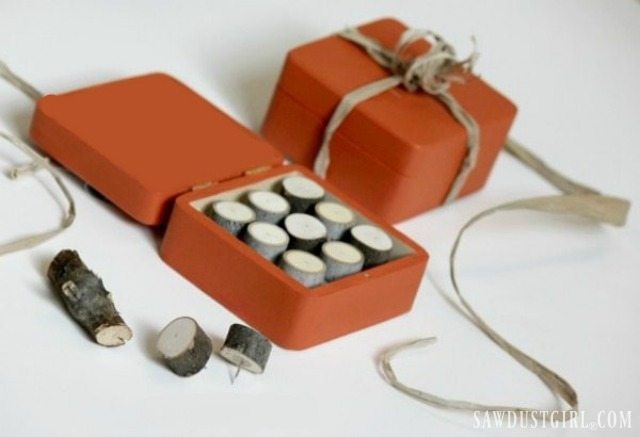
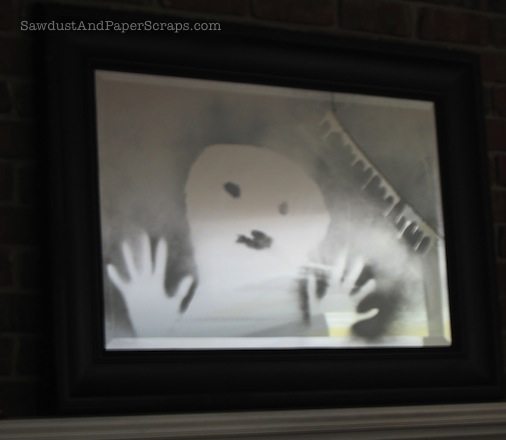
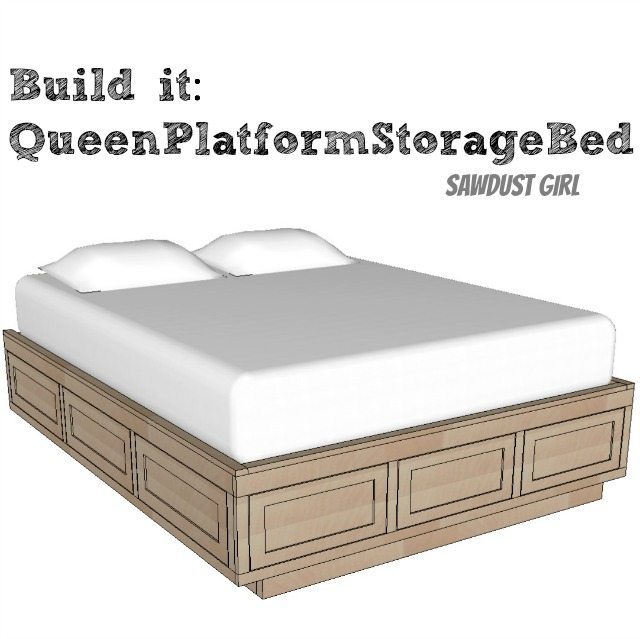
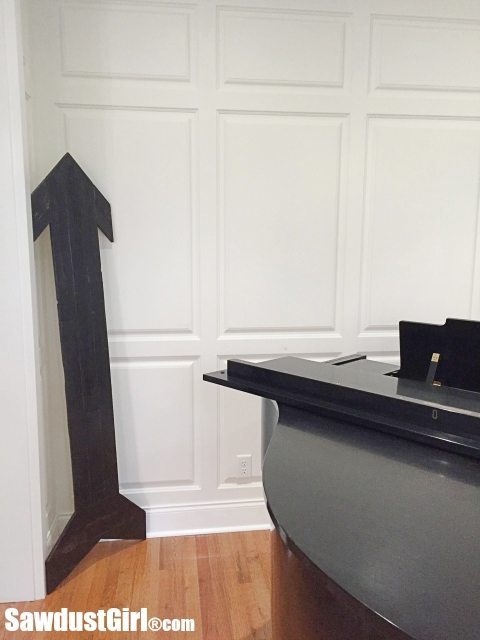
I LOVE your blog. Everything is just so great and practical from a DIY perspective. I have scoured your blog looking for your new living room paint color. I am about to paint my kitchen and I need this color! 🙂 Please share so I can get my kitchen finished.